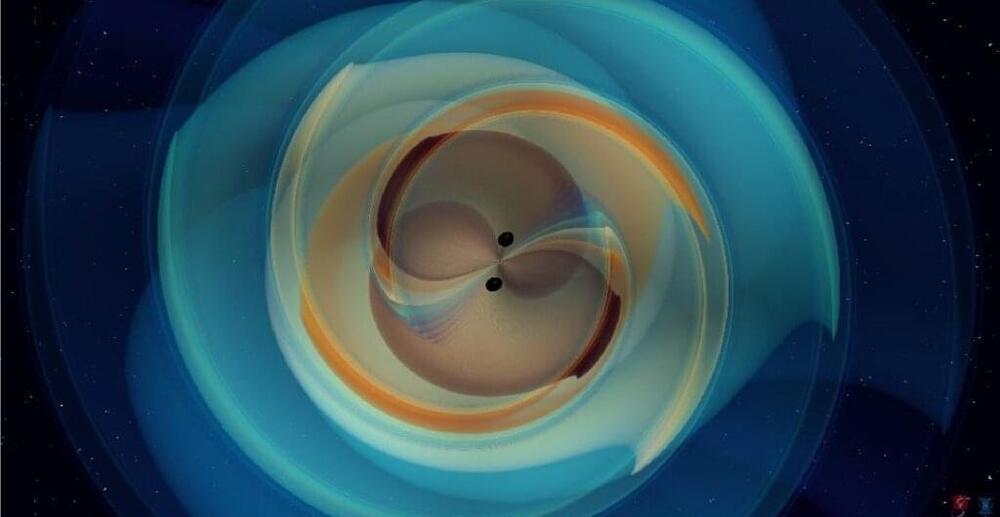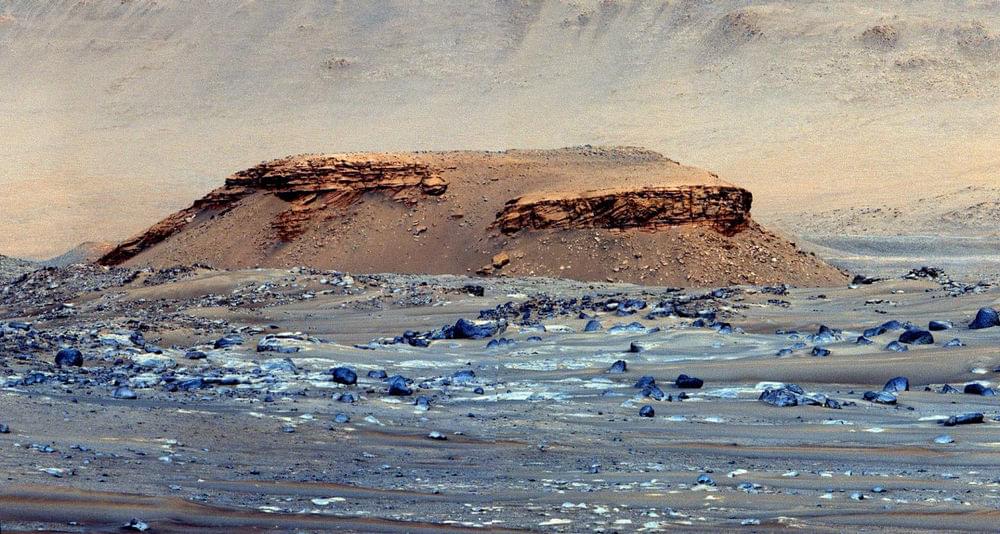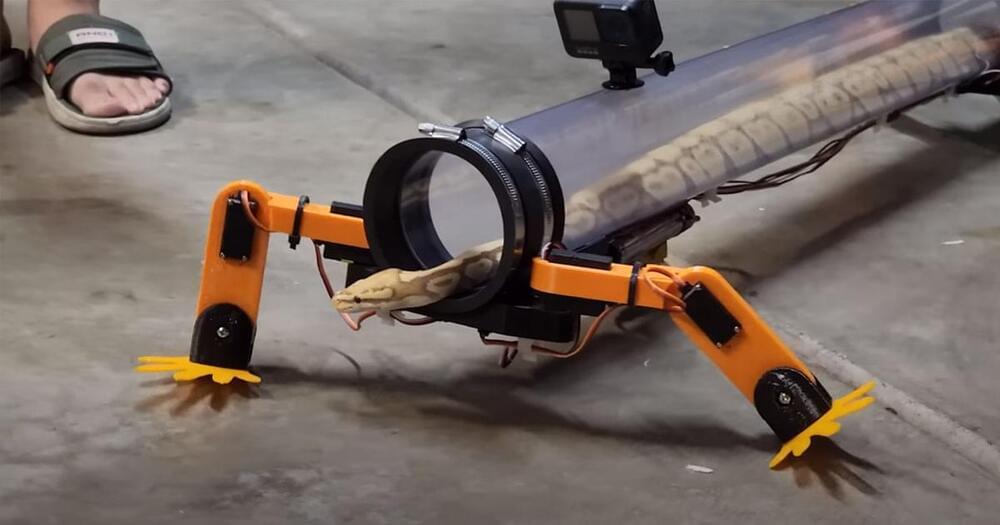Fusion is the key to the next era of humanity’s advancement in all sectors and the solution to almost every single problem ongoing in the world currently. Al…
Category: innovation – Page 133
NEW Nvidia AI Robot Simulation Tech + This Breakthrough Google Artificial Intelligence
Deep Learning AI Specialization: https://imp.i384100.net/GET-STARTED
Nvidia Isaac AI robot simulation just added several new features, including advancements in Isaac Gym for reinforcement learning and Isaac Cortex for collaborative robot programming, as well as a new tool called Isaac ORBIT, which provides simulation operating environments and benchmarks for intelligent robot learning and motion planning. New open source Dream3D turns text prompts into 3D modeling objects much faster than OpenAI Point-E. Breakthrough Google Muse turns text into high-quality images with accuracy and greater speed than DALL-E 2 from OpenAI and Google’s Imagen or Parti.
AI News Timestamps:
0:00 Nvidia AI Robot Simulation Tech.
2:05 Dream3D Text To 3D Modeling AI
4:29 Nvidia Artificial Intelligence Avatar Tech.
5:34 New Google “Muse” Artificial Intelligence.
#technology #tech #ai
DeXtreme: Transferring Dexterous Manipulation from Simulations to Reality
Breakthroughs in robotic manipulation will enable a new wave of applications for robots in commercial, industrial and home applications.
NVIDIA’s Isaac Sim and Gym tools allow robots to be trained entirely in simulation before their AI brains are transferred into real robots. Our video shows the results of this sim-to-real transfer.
This result has been made possible by simulating thousands of robots in parallel using NVIDIA GPUs, and by generating millions of training images using our Omniverse Replicator tools.
https://developer.nvidia.com/isaac-sim.
https://developer.nvidia.com/nvidia-omniverse-platform/replicator.
https://www.youtube.com/c/NVIDIAOmniverse

Rate of scientific breakthroughs slowing over time: Study
The rate of ground-breaking scientific discoveries and technological innovation is slowing down despite an ever-growing amount of knowledge, according to an analysis released Wednesday of millions of research papers and patents.
While previous research has shown downturns in individual disciplines, the study is the first that “emphatically, convincingly documents this decline of disruptiveness across all major fields of science and technology,” lead author Michael Park told AFP.
Park, a doctoral student at the University of Minnesota’s Carlson School of Management, called disruptive discoveries those that “break away from existing ideas” and “push the whole scientific field into new territory.”


10 Reasons Why Collaboration With China Will Help Billions Of People Worldwide Live Longer And Healthier
In 2021, one of the record years in biotechnology investments, about 50 drugs were approved by the FDA. 36 of these were small molecules. In my opinion, only about 5 of these were truly innovative targeting novel mechanisms and novel targets. The 10th revision of the International Classification of Diseases (ICD) contained 55,000 codes for diseases, injuries and conditions. Even if we assume that there are only 10,000 diseases, 50 FDA approvals per year seems to be an extraordinarily small number.
The reason for this small number of innovative and effective therapeutics is the long time, high cost, and low probability of success of drug discovery and development. On average, this process takes 12 years, costs over $2 Billion dollars and fails over 90% of the time. The most innovative therapeutics with novel targets have even higher probability of failure. To get these 50 drugs approved in 2021, the pharmaceutical companies globally spent over $100 Billion and over a decade.
The biotechnology industry is very different from any other industry and it is important to understand how it works, and the role China plays in delivering safe and effective medicines to suffering patients worldwide. Sharing risk, expenses, and infrastructure will result in acceleration of global biotechnology and increase the number of innovative drug approvals. Closer collaboration between the US and China in biotechnology would allow investors to share huge risks and returns while benefiting everyone on the planet and making this world a much better place.
Artificial Intelligence To Nerf Video Copyright With THIS | NEW Google Robotics AI Technology
Deep Learning AI Specialization: https://imp.i384100.net/GET-STARTED
A breakthrough artificial intelligence called SinFusion can now take any video as input and extrapolate a synthetic video as output, either moving forward or backward in time, using a diffusion model. Google AI has released a new robotics transformer (RT-1) that does over 700 tasks using a fleet of 13 different robot arms with 7 degrees of freedom and a 2 fingered gripper manipulator. Researchers from Korea have developed a quadruped robot that is able to walk on walls and ceilings using magnetic elastomers and electromagnets.
AI News Timestamps:
0:00 The Rise of AI Diffusion Models.
1:08 Custom AI Diffusion Model Options.
1:27 What Is SinFusion AI
2:35 How Sinfusion AI Works.
4:04 New Google AI Robot Tech.
6:28 New Robotics That Walk on Walls.
#technology #tech #ai


China claims ‘revolutionary breakthrough’ in cooling power plants
The technology system will enable the Yanghuopan Power Station in Yulin City, Shaanxi, to save 24,500 tonnes of coal and cut 54,100 tonnes of carbon emissions annually, claims Chinese media.
China claims the “world’s first” power plant equipped with a “natural direct cooling” (NDC) system is now connected to the grid in the Shaanxi Province of the country.
“The technology, described as ‘a revolution in industrial air cooling’ by local newspaper Shaanxi Daily, makes use of the natural airflow in the plant to guide the heat to the air condenser,” said the report.
PNK Photo/iStock.
This marks a “breakthrough” in power plant cooling technology for China, according to a report published by the state-run China Global Television Network (CGTN) on Friday.
How Did Humans Boil Water Before the Invention of Pots?
Roasting would have been easy. But re-creating the paleo way of boiling water requires a bit more imagination.